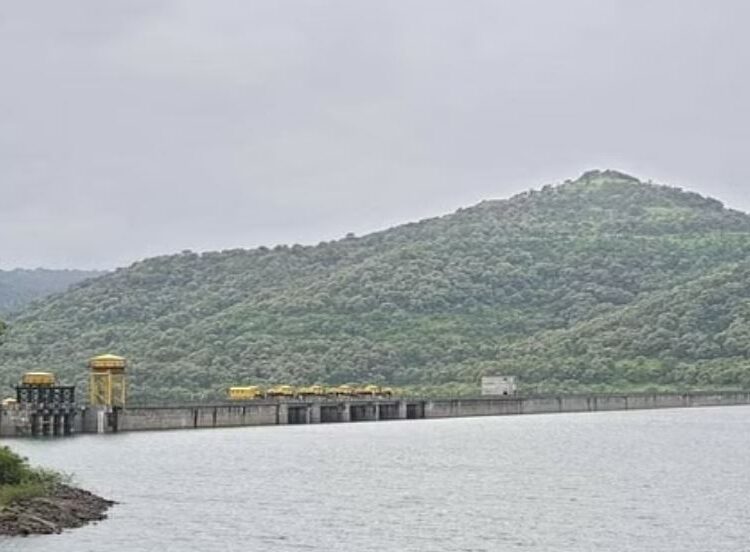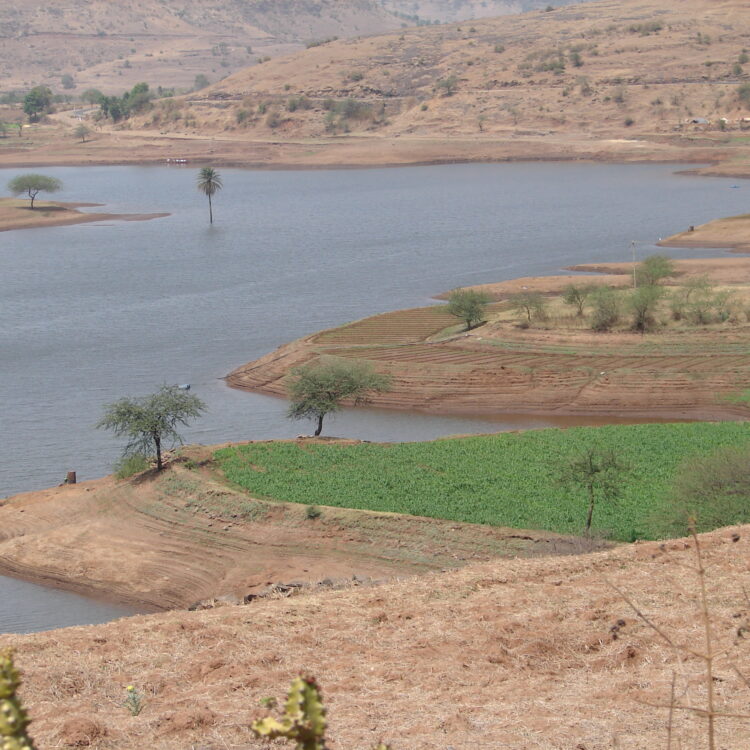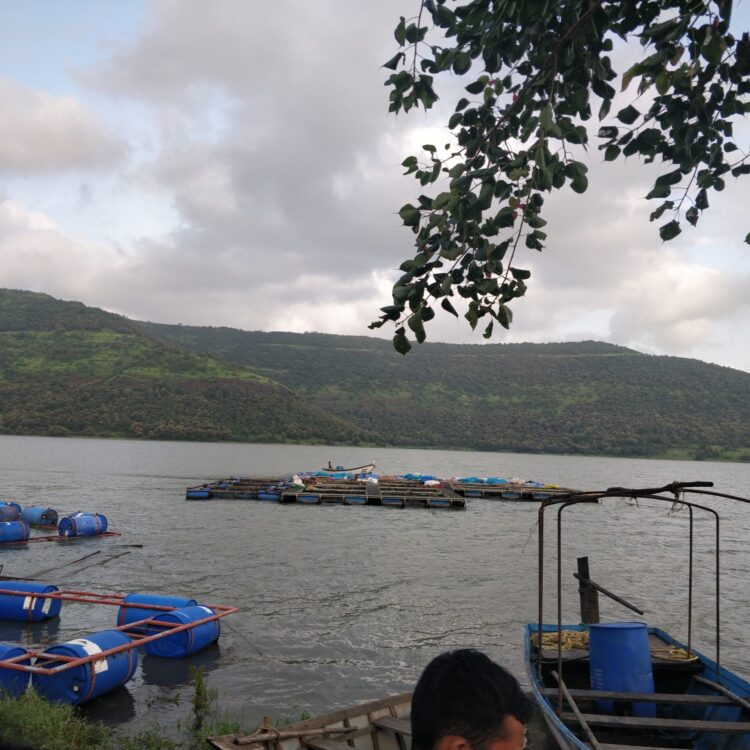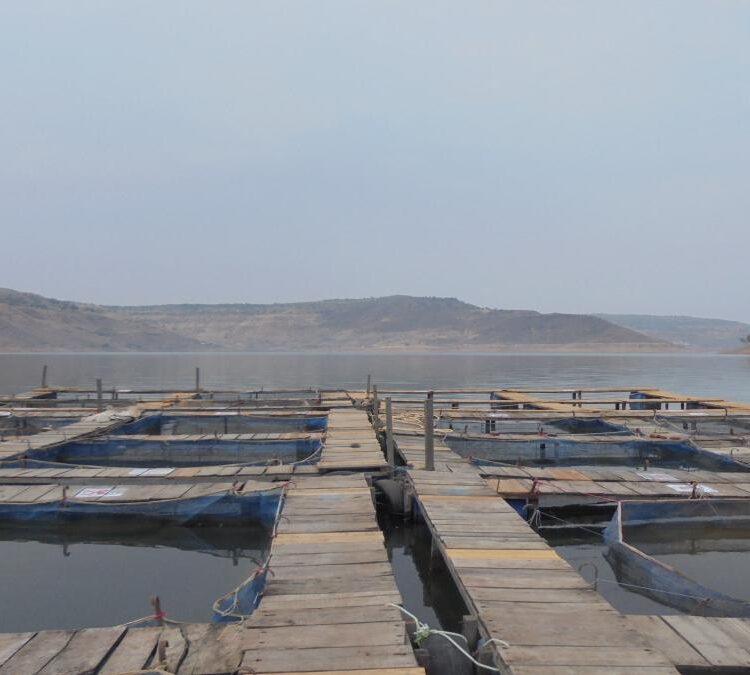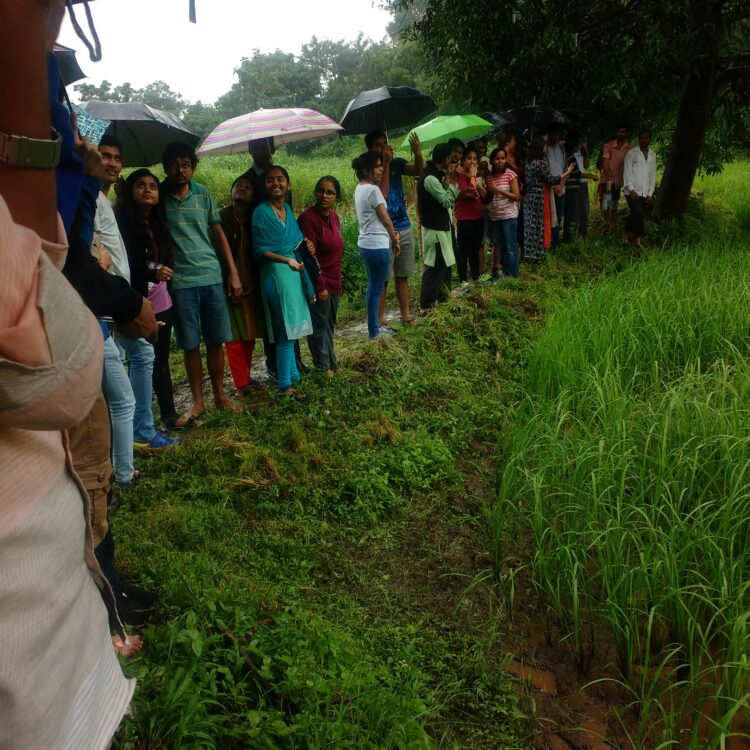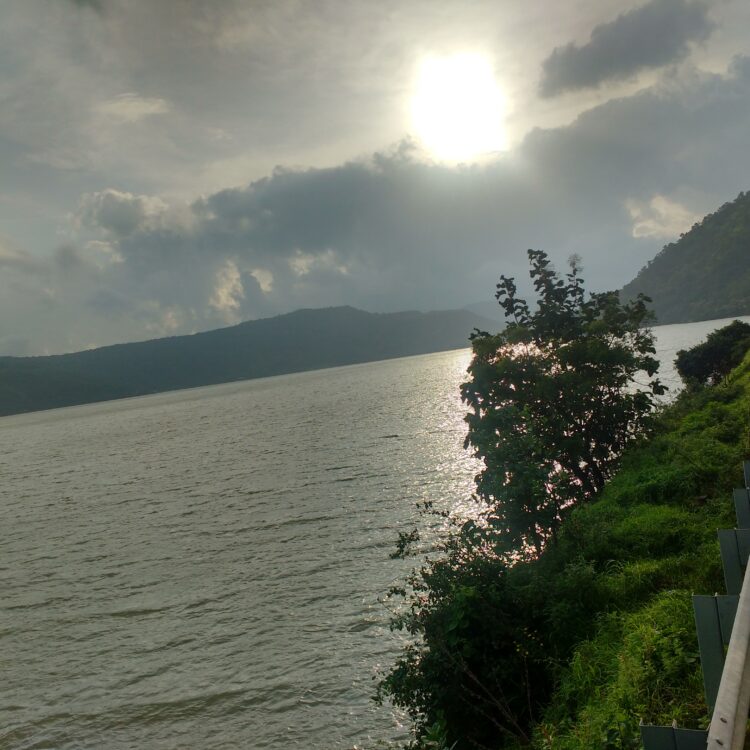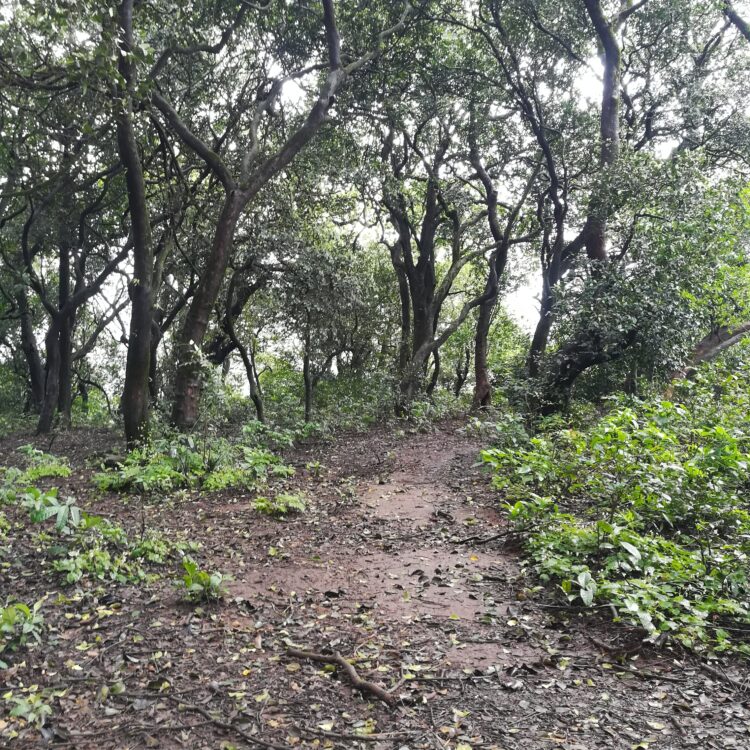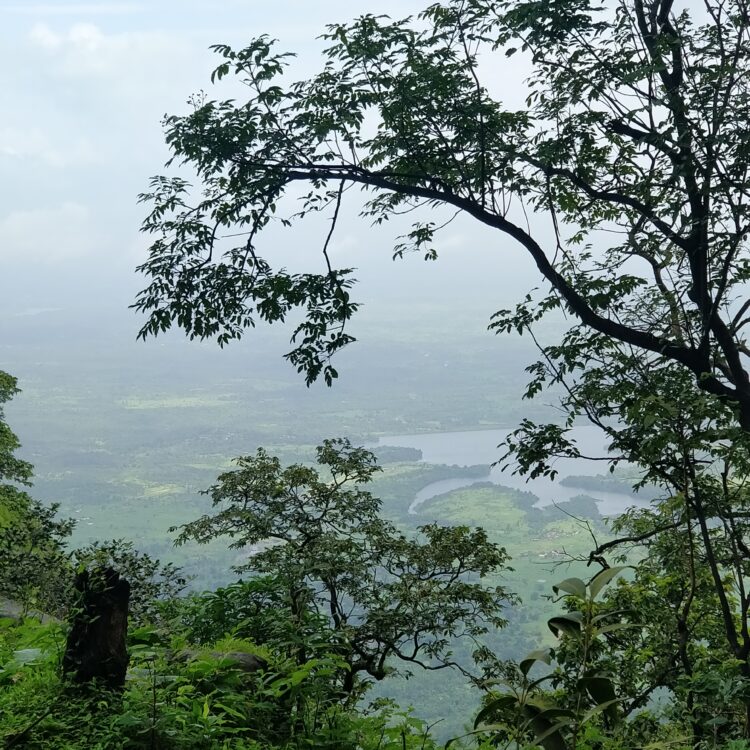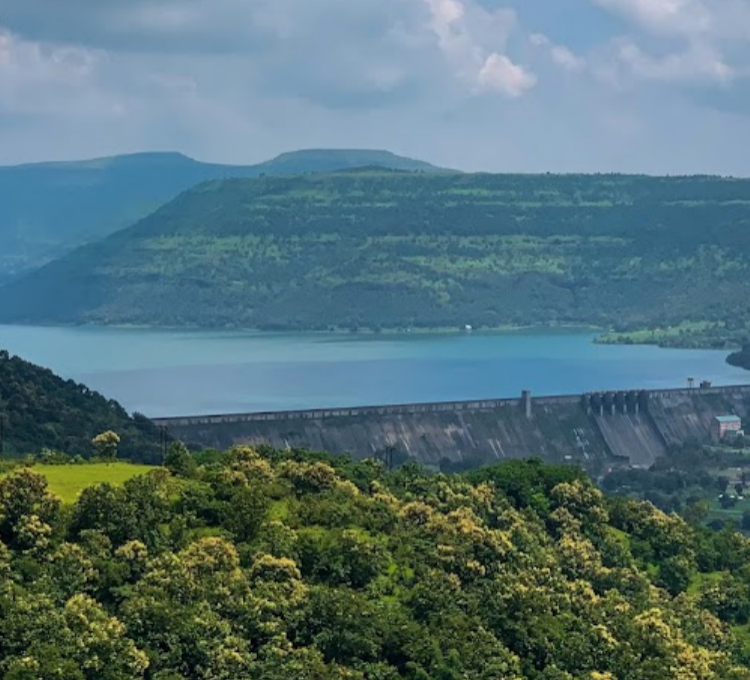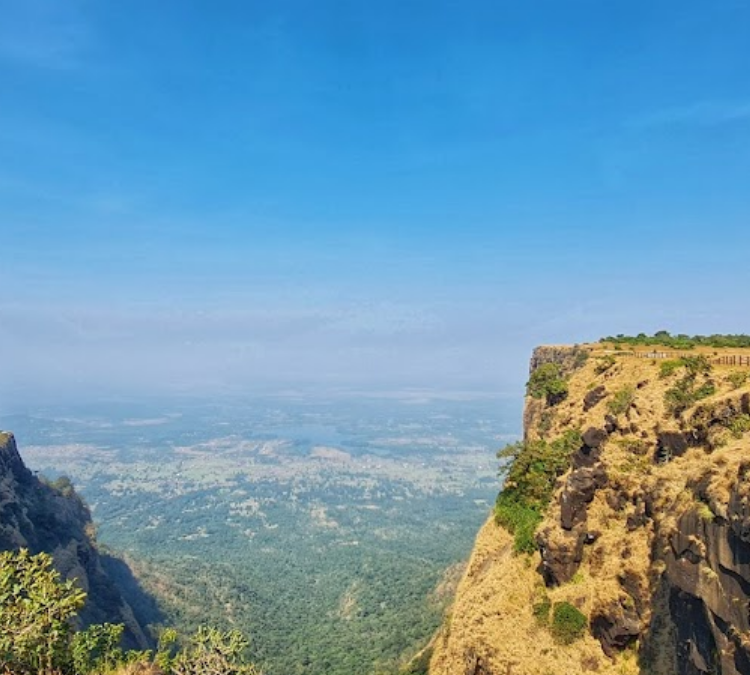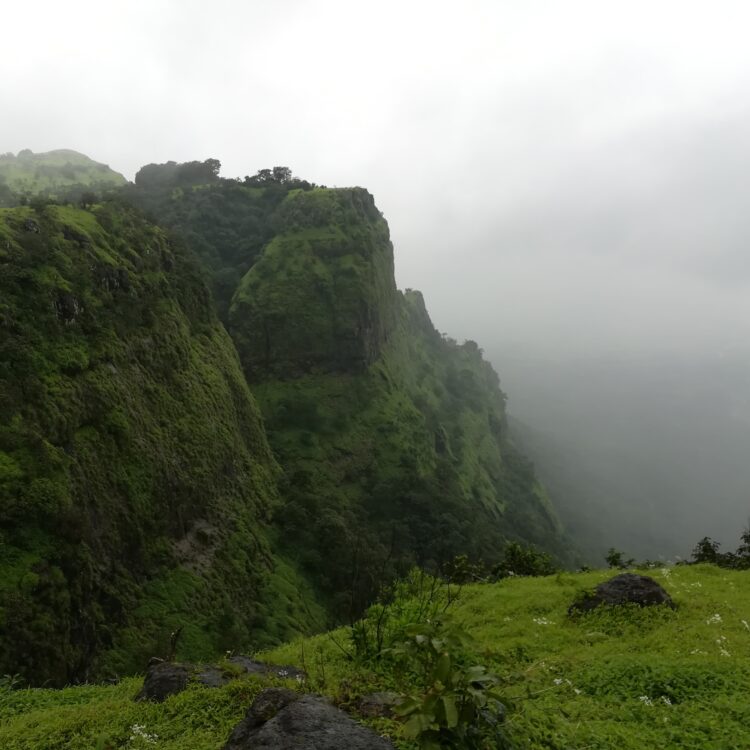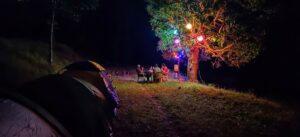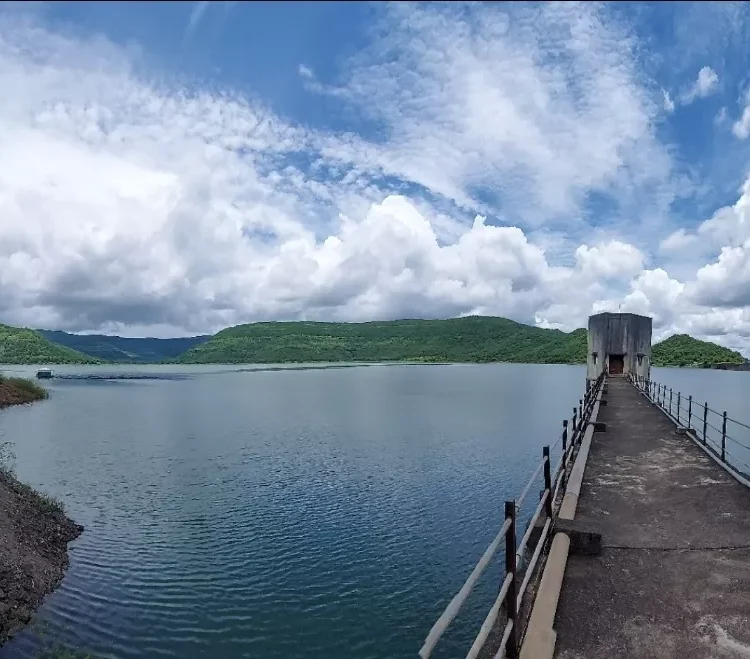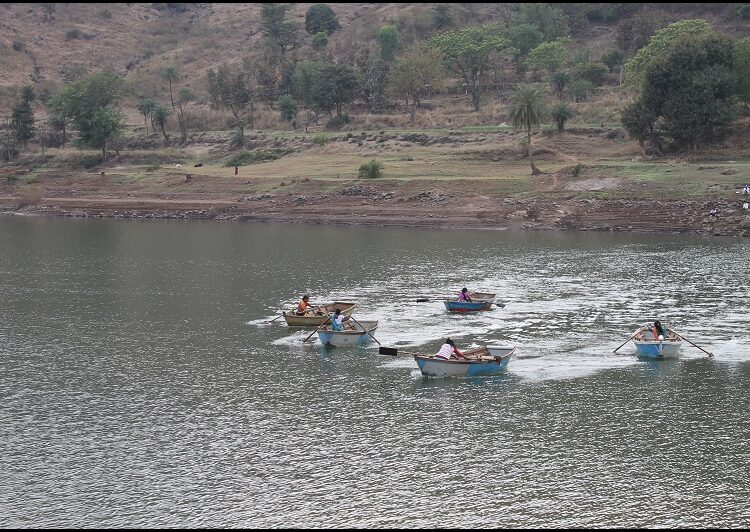Challenge 1: Inclusive and integrated water resource management
Water as a catalyst for community integration.
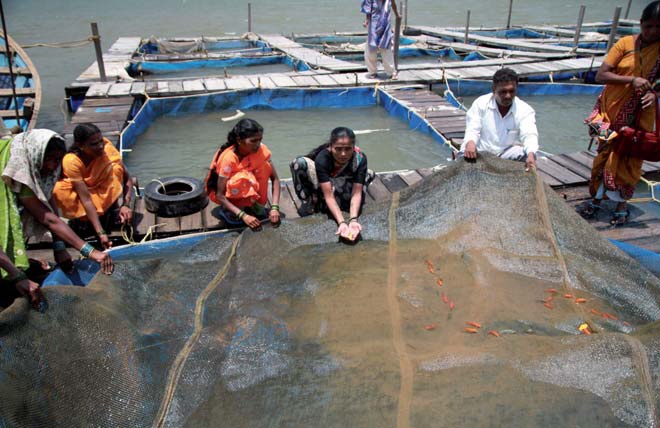
Creating Inclusive Livelihoods Through Fisheries and Ecotourism
Team: EcoLives, India | YA-IN-1
As the dust settles and the waters rise…
When a reservoir is created to ensure water availability for a growing city, it uproots communities in its submergence zone, isolated from mainstream society for generations to bear the brunt. Even if rehabilitated, the tribals’ primarily forest-based production systems, kinship, and trade mechanisms fall into disarray; they are forced to endure the sheer emotional trauma of displacement. The result has been creating a new class of Indians impacted across social, cultural, psychological, and economic facets – victims of manufactured poverty. Once the dust settles and the waters rise, self-sustainable village communities invariably get trapped in the vicious cycles of poverty, malnutrition, and low education levels.
A similar fate awaited the Mahadeo Koli, Thakar, Kathodi, Katkari, Dhor, and TokreKoli forest-dwelling tribes in the submergence zone of Dimbhe Dam on Ghod River in Ambegaon block of Pune District in Maharashtra. The 220-foot-tall gravity dam, a large-category dam, was sanctioned in 1968 and has been fully functional since 2000. At 100 km from the Pune metro city, the Dimbhe dam is a crucial infrastructure to irrigate 36,552 ha of land through the Right Bank and Left Bank canals and produce five MW of power. The price of development is paid by the 1253 displaced families from 11 fully submerged villages and 13 partially submerged villages. Of these, almost 60% have returned to the dam site and living above the submergence zone. Currently, 19 villages are on the fringes of the Dam, of the total 44 villages in the catchment area. The following map shows the catchment area of the dam and the locations of the surrounding villages.
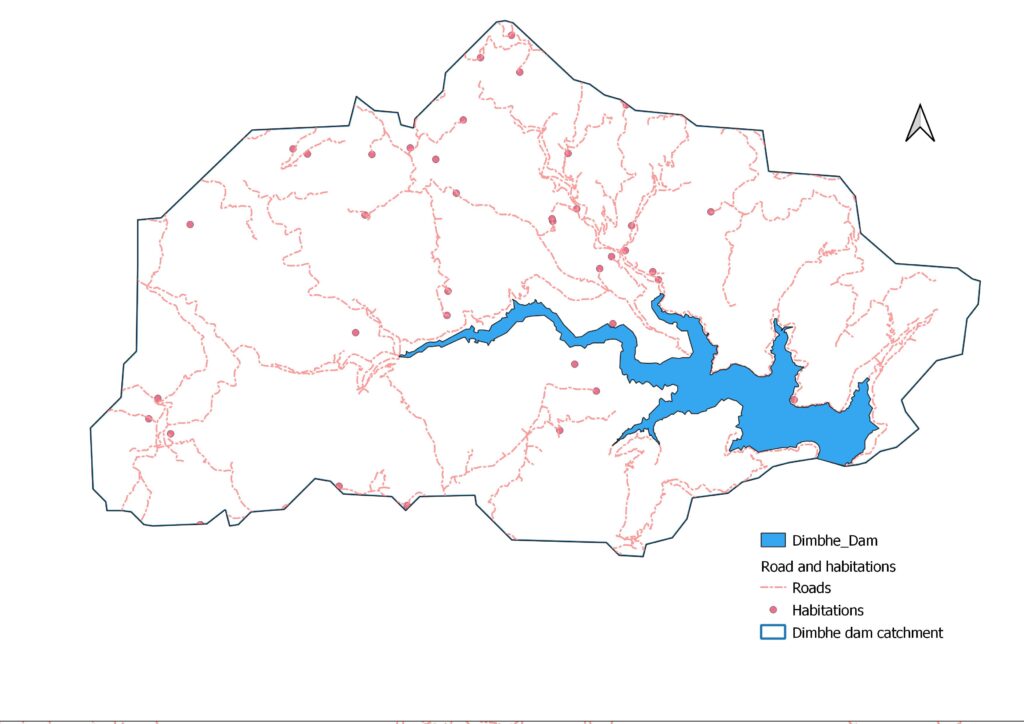
Farmers and tribals turned fisher-folk at Dimbhe dam
Due to the loss of agriculture, these traditional farming communities started to explore fishing with the help of a local NGO, Shashwat, with community ownership and leadership. But the limited access to capital, expertise, and knowledge did not allow for the complete realisation of fishing potential. In the best of years, the 300 fisherfolk part of the local fisheries cooperative harvested about 30 tonnes of fish, which translates to average of Rs 5,000 per person per year, before subtracting the costs. In this video, late Anand Kapoor, the founder and director of Shashwat, talks about the fishing efforts done till 2012, when the video was made for the Equator Prize (the whole video can be found here.)
Years of efforts have been made to improve the fishery-based livelihood in this area, aiming at capacity building, local leadership, setting up a fish hatchery at Kushire Khurd, providing nets, trying cage culture and pen culture, running an ice factory, etc., with some degree of success. Due to the vagaries of nature and lack of repair and maintenance funds, different assets became dysfunctional over the years, thus making fishing insufficient for a secured livelihood. Recently in 2022, the tribal development corporation provided another impetus of Rs. 1.28 Cr for cage growth culture, pen cultures, nets, etc. But these infusions are few and insufficient to make the business sustainable.
An income of five thousand to fifty thousand rupees from fishing is not adequate to cover the annual expenses of a family. The Mahadev Koli tribe families also farm in the tail end of the dam when the waters recede, while the Katkari families are caught in an annual loan trap with local money lenders, which forces them to work as labourers in brick kilns. The male members of many families migrate to nearby cities for wage labour. These small villages in Maharashtra tell the tale of thousands of places in India and millions of people at the receiving end of a similar fate.
This Causal Loop Diagram is our attempt to showcase the existing problems surrounding and what can be done about them. An interactive version can be accessed here.
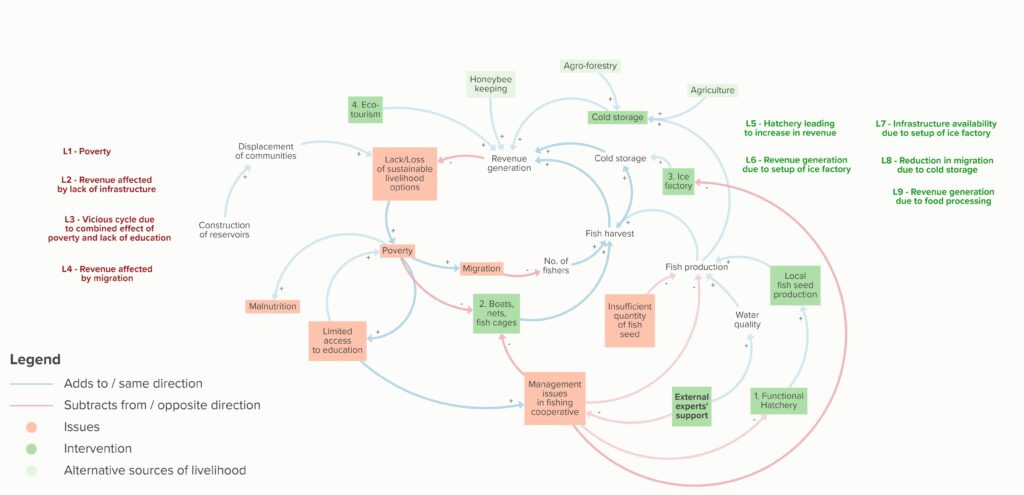
How can we improve the lives of these affected communities?
It was seen that the existing efforts for fisheries development do not suffice, and alternative livelihoods are needed to support it. Some families do subsistence agriculture which is under threat due to climate change. Thus it is crucial that other locally appropriate livelihoods options are generated.
The Dimbhe dam has existing tourism potential due to the presence of Bhimashankar Wildlife Sanctuary and Bhimashankar temple, an important pilgrimage site next to the dam and having Pune, a large metro city, 2 hours away. Opportunities for forest-based livelihoods also exist and attempts are being made for the same. We have decided to focus initially on the main fishing and ecotourism industries to boost the income levels of the families living in this region.
The crux of the intervention is to
- Infuse a sizeable investment to break out of the poverty/ unsustainability trap of the existing fishing business,
- Improve the viability of the fishing business through better management and real-time monitoring practices,
- Supplement by creating an eco-tourism hub with the local community providing all services, and
- Ensure communities own and manage the resources and allied business activities by building their capabilities and supplementing them through long-term external expert support.
The solution keeps in mind the principles of
- Increasing productive water use
- Inclusive for marginalised and project-affected communities
- Equitable distribution of resources and benefits
- Sustainable processes and businesses
- Environment friendliness
- Convergence among different development agencies
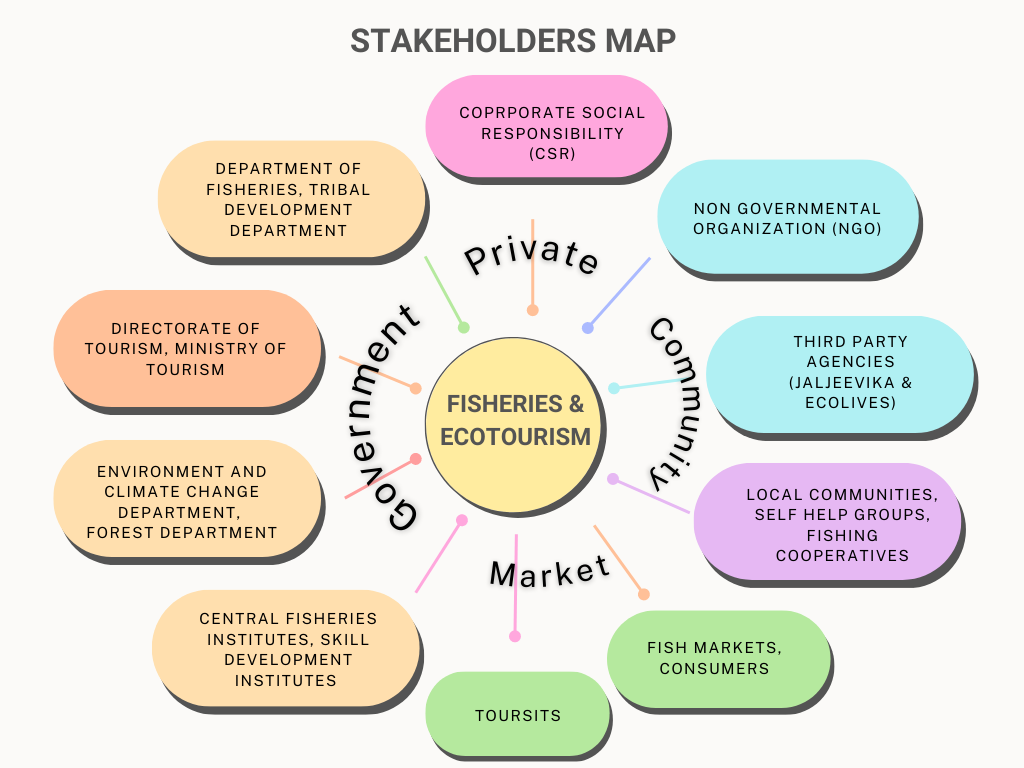
The project can be broadly divided into two parts – 1. improving existing fishing infrastructure and practices and; 2. introducing organised ecotourism activities.
Improving fishing
As noted earlier, the existing fishing cooperative has been actively trying to improve the fish yield and harvest from the reservoir despite many setbacks. They have different existing infrastructures, such as a small hatchery and a defunct icemaking plant. They also have multiple cage culture sites and pen culture sites, which are reestablished every few years. Due to seasonal rainfall, water release from upstream dams, and irrigation cycles, the dam sees large annual fluctuations in its water levels, falling down to dead storage every few years. The following data from historical satellite imagery shows how fluctuation of water levels in the dam.
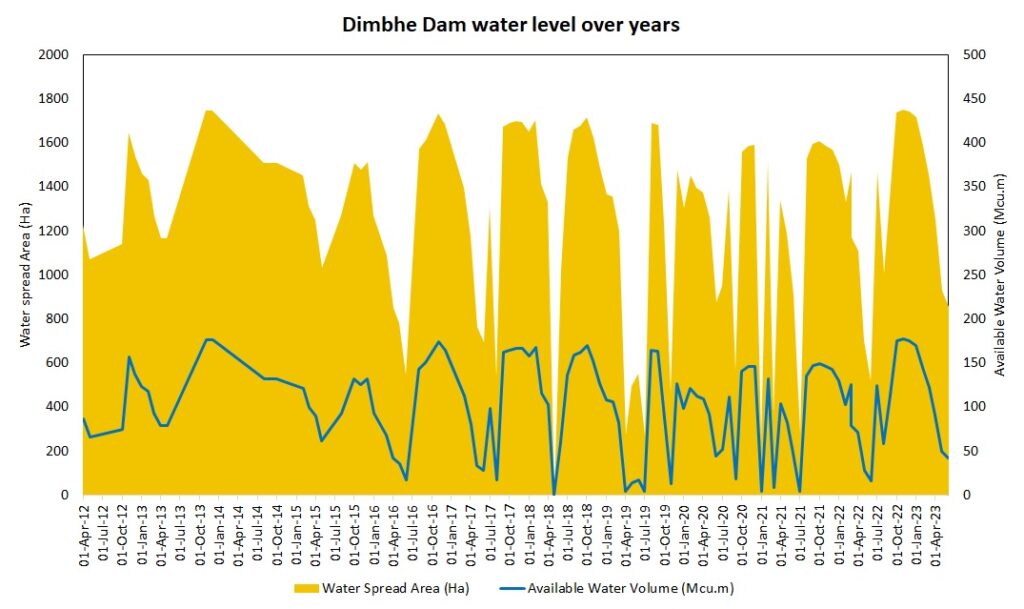
These wide fluctuations and almost annual flooding cause a loss of large quantities of grown fish, so much so that the problem is less about growing enough fish and more about successfully harvesting them. The recent advent of fish cage grow-out methods in the last ten years, supported by government schemes, is an ideal way to ensure a captive harvest. Compared to an estimated capital investment of Rs. 1 lakh per cage, the operational costs are as high as Rs. 2 lakhs per year. To grow Indian Major Carp fish varieties and be profitable, we propose that half the cages should be harvested every year, allowing a growth period of two years for the fish to let them achieve full maturity and weigh over 2 kilograms, which will fetch good market rates. Starting from a scaled-up hatchery, the proposed fishing model involves 200 real-time monitored cages and reservoir fishing and can provide an annual income of about Rs. 90,000 for up to 500 families.
Ecotourism activities
Exploiting the existing interest of tourists to visit this area and taking support from the tourism development department’s program for homestay development in tourist spots, we propose creating multiple small tourism sites involving homestays, campsites, etc., as shown in the figure. These activities, if well managed, have a huge potential, but a modest estimate based on the controlled entry of tourists to maintain the natural habitat would be that each family will earn over Rs 90,000 a year. This data is based on our short market survey, which reported that people are willing to spend between Rs 3,000 to 7,000 for a weekend trip in this area and are interested in proposed ecotourism activities.
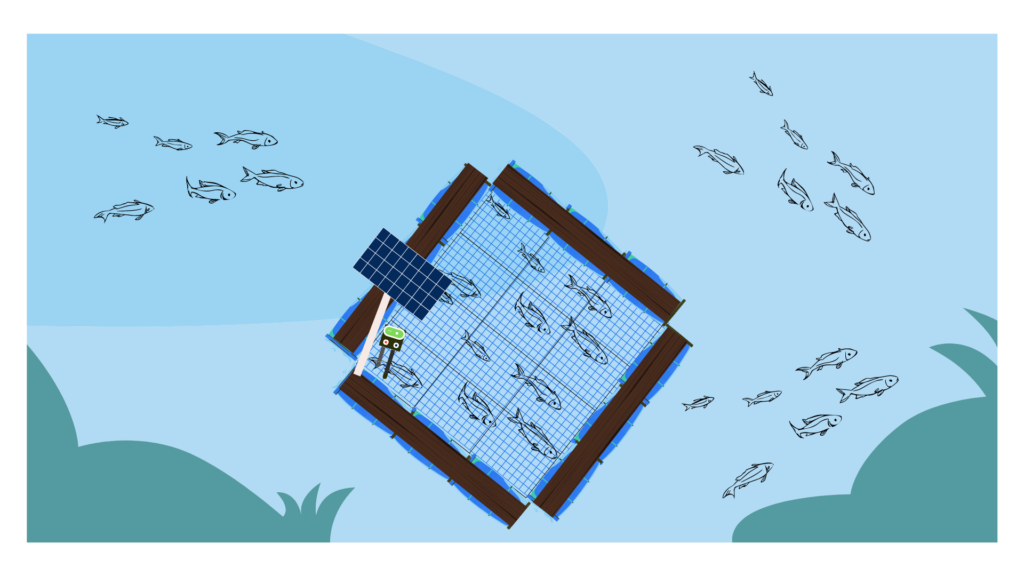
These wide fluctuations and almost annual flooding cause a loss of large quantities of grown fish, so much so that the problem is less about growing enough fish and more about successfully harvesting them. The recent advent of fish cage grow-out methods in the last ten years, supported by government schemes, is an ideal way to ensure a captive harvest. Compared to an estimated capital investment of Rs. 1 lakh per cage, the operational costs are as high as Rs. 2 lakhs per year. To grow Indian Major Carp fish varieties and be profitable, we propose that half the cages should be harvested every year, allowing a growth period of two years for the fish to let them achieve full maturity and weigh over 2 kilograms, which will fetch good market rates. Starting from a scaled-up hatchery, the proposed fishing model involves 200 real-time monitored cages and reservoir fishing and can provide an annual income of about Rs. 90,000 for up to 500 families.
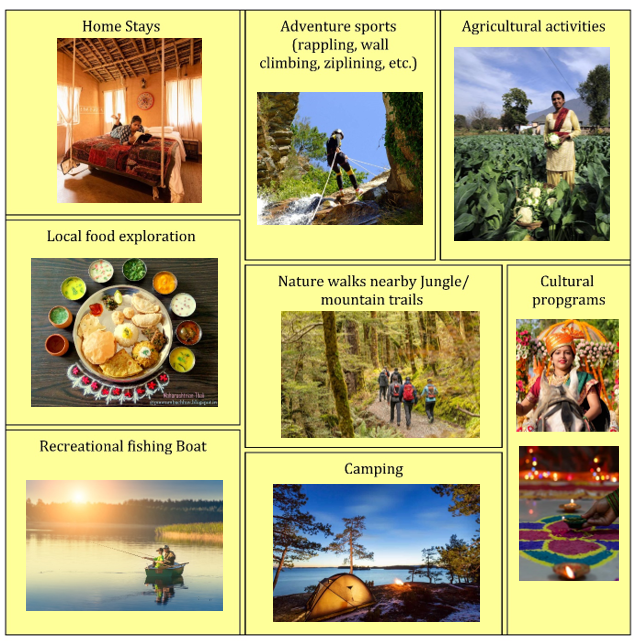
Ecotourism activities
Exploiting the existing interest of tourists to visit this area and taking support from the tourism development department’s program for homestay development in tourist spots, we propose creating multiple small tourism sites involving homestays, campsites, etc., as shown in the figure. These activities, if well managed, have a huge potential, but a modest estimate based on the controlled entry of tourists to maintain the natural habitat would be that each family will earn over Rs 90,000 a year. This data is based on our short market survey, which reported that people are willing to spend between Rs 3,000 to 7,000 for a weekend trip in this area and are interested in proposed ecotourism activities.
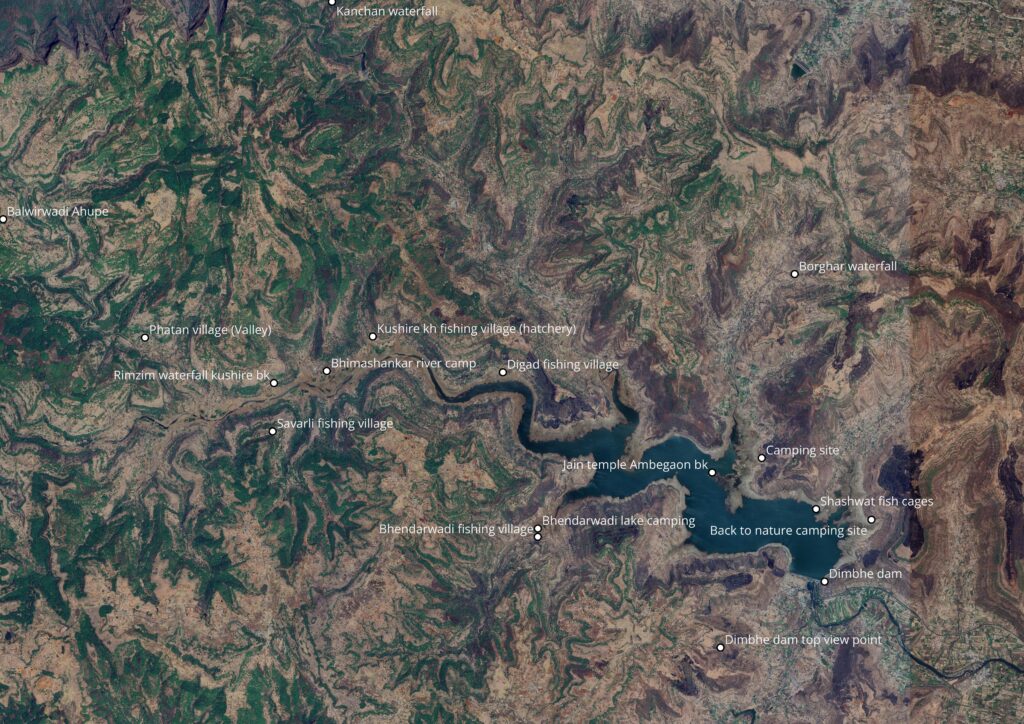
The area’s local tourism potential can be seen in this map, which shows the points of interest along the Dimbhe reservoir. Working closely with the local forest department and community, forest hiking trails will be developed. The photos in the gallery below attest to the beauty of the valleys here.
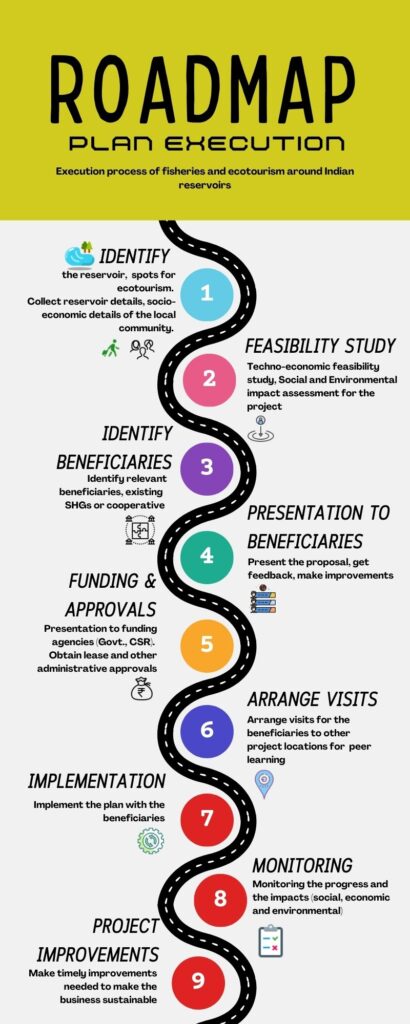
The proposed solutions have been evolving since the last decade, and many people have been trying to implement them in various location. The value of our innovation lies in these solutions using the latest approaches and customising them for the local context. In the limited duration we worked on this idea, we have used satellite imagery, carried out extensive literature reviews, crunched numbers gathered from different sources and, using our on-ground experiences and understanding of social realities to propose a feasible solution. Its success depends on continued efforts, working closely with the target community, tapping into our network for expertise in fisheries, business development, real-time monitoring, tourism, etc., and creating a vibrant ecosystem owned and operated by the local community. By creating a business proposition that is a win-win for everyone involved, we plan to push for a pilot proposal at Dimbhe dam. Succeeding and learning here, we envision scaling up to multiple other locations; your support is solicited through expertise, connections, and funding which will help us in getting expert inputs to fine-tune the business plan and to prepare site-specific detailed project report.
The Team
Our team constitutes of Meghraj Garad, Shraddha Vekhande, Vamsee Krishna and Yatin Diwakar, all PhD students at the Centre for Technology Alternatives for Rural Areas at the Indian Institute of Technology Bombay. We like to explore opportunities to apply our skill sets and expert knowledge to real-life problems and establish successful solutions. We realise that technology alone cannot solve social problems and needs a lot of work with the communities on behaviour, processes, institutions, etc.

